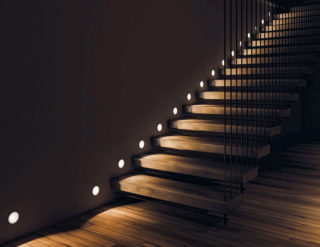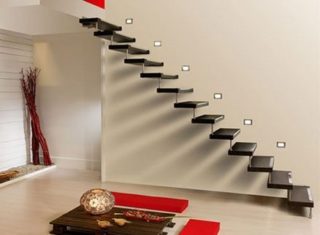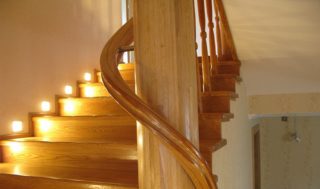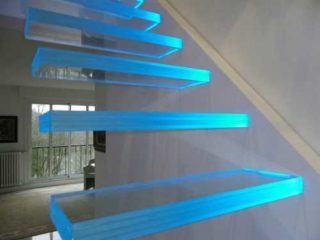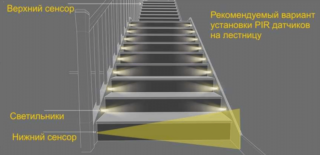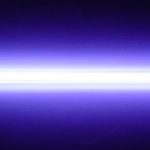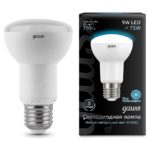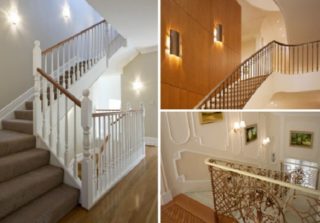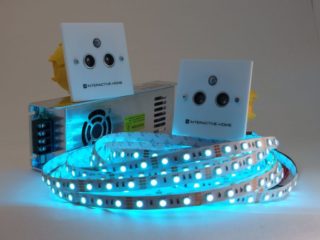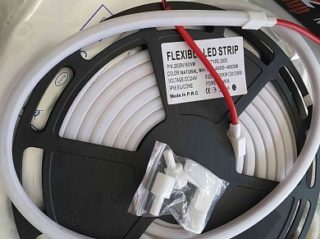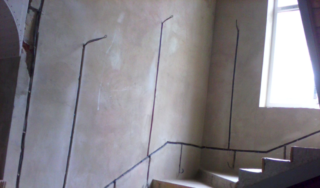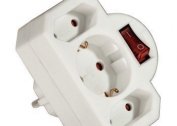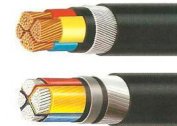Stairs in two-story houses are most often installed in places where there is no natural light, so for safety it is recommended to make the steps illuminated. On different types of stairs - glass, wooden, concrete, stone - lamps should be installed, primarily based on the degree of combustibility of the material, then design and economy.
Types of stairs and optimal lighting for them
By design, several types of stairs can be distinguished - spiral, mid-flight, and bolt. For each type, you can choose the right fixtures - built-in or pendant. Based on the design and materials for the manufacture of stairs, it is necessary to take into account the electrical conductivity and combustibility, as well as the degree of necessary lighting in this place. Perhaps the steps are near the window, so lighting is only necessary in the dark, then there is no need to install powerful appliances. In another case, when the steps are located in a dark place of the house, it is better to equip two types - full lighting of the stairs in a private house to the second floor and partial, in order to be able to save.
Screw, marching, bolt types
Screw constructions save space in small two-story houses. For convenience, they are given a corner space, where it is quite simple to arrange additional light. It can be located on the central rack, to which the steps are mounted or on the wall in a direction from top to bottom.
Marching type is the most common. Allows you to install various types of lighting - under the stairs, in the wall, on the ceiling.
Stairs on the stairs - outwardly look airy or suspended. In fact, these are durable structures in which steps are attached simultaneously to the wall and the bolts or only to the metal frame under them. The gaps between the steps are wide enough so that light penetrates through them.
Wood and metal
Wood is still the most used material in building houses, but it has the highest degree of combustibility, therefore it is treated with flame retardants and covered with solutions that reduce the risk of ignition. It is important that the wires have good insulation. For lighting, low-current systems are selected with this type of lamp that does not produce much heat.
Metal is less commonly used due to the high cost and heavy weight of the forged products. To prevent metal steps from slipping, lining made of wood or other material is made on them. Metal is a conductor of electricity, so the wiring is additionally insulated by placing in a corrugation. If the metal is supplemented with plastic or wooden elements, they create a fire hazard, and plastic under the influence of high temperatures can melt and produce fumes that are hazardous to health.
For forged staircases, wall sconces or hanging chandeliers are the best lighting option, which look harmoniously in the interior and are safer at a distance than near combustible materials.
Stairs with transparent steps and rails.
You can create a feeling of lightness with the help of shockproof glass, applying it to equip a transparent staircase.Not only steps, but also railings can be transparent. This design is absolutely safe, despite the apparent fragility. This design allows you not to use the backlight at all, or confine yourself to spotlights at the level of the steps.
Concrete stairs
Concrete is the most suitable material for creating high-strength intra-house structures. Its peculiarity is that after pouring and hardening, the staircase made of concrete can not be disassembled, so the illumination of the steps of the stairs is planned and designed in advance, since for the lighting equipment the wiring will be mounted in concrete. In this case, you can not choose cheap materials, as they deteriorate faster and you will need to dismantle the entire structure to get to the wires and replace them.
Methods of lighting stairs
The main problem is to organize light control from several points - from the first and second floors. To do this, there are several ways - a timer, motion sensor, switch through passage. There can be several switches: on the first floor, on the second and, for example, at the entrance to the house. For automatic illumination, you need a ceiling detector with a full view. For the timer, you need to install a program that will turn on and off the lights at a certain time, for example, in the evening.
Auto backlight
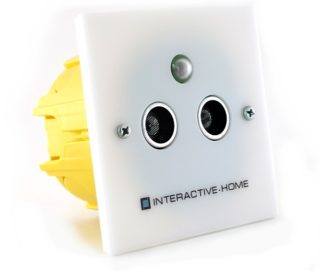
Automatic lighting is made of several lamps that are built into the wall like switches. The advantage of such a system is that the sensors are triggered at night if motion is detected. During the day, the motion detector does not work.
It is enough to install such a lamp on every fourth stage, which allows saving. The duration depends on the model - approximately 30 - 50 seconds. Illumination of stairs on steps with a motion sensor can be wireless or work from the network.
Lamps in such systems are economical and do not emit heat, therefore they are safe for wooden and plastic linings.
Arrangement of wireless and conventional network lighting
Wireless systems are powered by alternative power supplies. This allows you to safely move around the house in the absence of electricity. Low-power systems can run on conventional batteries. Lamps can be installed by a person who does not have experience with electrical equipment, since the mechanism does not have a life-threatening voltage.
Ignition is not possible with such systems, since weak lamps are used that do not produce heat. Manufacturers of wireless systems offer their power supplies, which are enough for a year, which is a significant savings in electricity.
Doing electrical wiring without special knowledge on your own is life threatening. In addition, you can make a mistake and the lamps will not work as planned. It must be borne in mind that in addition to wires, it will be necessary to integrate sensors, power supplies, relays, and controllers into the general circuit.
Network lighting of the stairs is planned in advance, as in some fixtures the electrical unit is mounted before laying drywall and plaster. In this case, it may be necessary to gouge the walls and lay the corrugated tube with wires, after which the wall is concreted and leveled.
Types of lamps for stair lights
In addition to incandescent lamps, which consume a lot of energy and produce a large amount of heat, for the installation of staircase lighting, apply:
- Halogen. They shine brightly, but generate heat, so they are rarely mounted in wooden structures. As additional lighting in combined systems are ineffective, since bright light on the stairs is usually not needed. The lack of sensitivity to voltage drops, which is why they quickly burn out.
- Neon lamps. They shine dimly, serve for a long time.The case is quite fragile, therefore, protective devices against mechanical damage are needed.
- LED - the most popular, as they have a wide range of shapes, power, color. Suitable for installation near wooden structures because they do not emit heat. Serve for a long time.
- Halogen lamp
- Neon lamp
- LED lamp
Economical lamps can be used in large quantities, creating light panels and light beams in various sections of the stairs.
Types of lighting devices and their installation location
To illuminate the stairs, the following types of lighting devices are used:
- sconces - wall lights;
- ceiling chandeliers that are mounted in the stairwell;
- LED lamps or tapes are placed under the railing, under the steps, in a special box on the wall along the stairs;
- spotlights - can be mounted on the walls below or directly on the surface of the steps.
Most often, a combined system is used, where several types of devices are involved. It is convenient and economical in terms of electricity consumption. However, some devices can be connected to an autonomous power system.
The main criteria for choosing a backlight
To ensure that the staircase lighting is of high quality and does not cause inconvenience, you need to choose the best option. To do this, consider the criteria:
- How much lighting is needed for this section of the house. If natural light penetrates well, low-power systems with a small number of lamps can be used.
- Profitability of lamps, since you will have to use the stairs often. Even with motion sensors, they will be triggered continuously.
- Safe movement of stairs, which in case of lack of electricity can create a problem, especially if some part of the stairs is not fenced. It is important that some lamps work from an autonomous power source.
- The brightness of the lighting should not cause inconvenience, that is, the lamps should be installed so that the light is not directed to the person's face.
- If you plan to install staircase lighting yourself, you need to take into account your own knowledge and capabilities in terms of working with electrical networks and equipment.
- In terms of design, electrical appliances must be combined with the interior of the house and specifically with the appearance of the stairs.
- The budget that may be spent on the purchase of supplies, fixtures and equipment for managing light sources.
Given the above wishes, you can begin to choose the lighting scheme of the stairs.
Step-by-step installation instructions
Given the complexity of the system to be mounted on the stairs, it is recommended to sketch out an approximate arrangement of devices. This will help to correctly calculate the amount of consumables and intermediate devices, as well as establish the estimated amount of work.
Lighting scheme selection
The choice of lighting scheme depends on the design of the stairs, its location in the house, the degree of natural lighting. For self-installation, it is recommended to use simpler methods of controlling the light, for example, passage switches. More complex systems with timers and sensors require the connection of additional devices and special settings.
The location of the lighting devices and their number depends only on the wishes of the residents. If it is impossible to carry out planning yourself, it is better to entrust the work to specialists.
Material calculation
The optimal amount of light on the stairs is calculated based on its length, width, lamp power.If the goal is to save, you need to choose durable, low-power systems, such as LED strips. Before buying materials, you need to calculate the total length on which the tape will be mounted, and add a small margin. In the store, LED strips are sold per meter or in rolls of 250 or 500 meters.
You will need to buy additional equipment for controlling the light - a microcontroller, an LED driver or something similar in functionality, touch sensors, phototransistors to turn on the backlight only in the dark. To control all devices, you need a 12 volt power supply.
For wall mounting wiring, you need to measure the total length. To do this, at the stage of rough repair, electricians outline the lines where the wire will pass. Inside the wall, the wiring must be in a protective corrugation so that the natural deformation of the structure does not damage the wires.
Installation and connection
The first step is to assemble and test the control module - this is the most difficult part of the job. If everything works, you can proceed with the installation. The LED strip is connected to the wires and glued under the steps or under the railing (where planned). The surface before this is degreased with acetone.
For fixtures, you will have to make square holes in the wall with a puncher and wiring strobes, so this work is more convenient to do at the repair stage. After laying the wires and the socket of the lamps, the holes in the walls are covered with cement. In the same way, sensors are installed on the upper and lower steps.
Now you need to connect the wires to the desired controller connectors on the board. The last step is to connect the power supply to the electrical network.
The controller is connected to the computer and configured thanks to a program that you can write yourself or download ready-made. The system is tested in all operating modes; during the check, malfunctions and inaccuracies are eliminated. After that, the control board is closed in a durable case, which is desirable to install in a place where it is convenient to carry out repairs.
Safety precautions
Safety measures apply not only to the use of high-quality wiring and accessories, but also to the combination of various types of lamps and staircase material. Depending on the decorative style, materials are selected - stone, wood, plastic, glass and their various combinations. For recessed fixtures, the type of lamp is selected based on the degree of combustibility of the material, which must be treated with fire-fighting solutions. Metal parts should not come into contact with the insulation of the wiring, which theoretically can melt, so the bundles of wires must be additionally insulated with a corrugated tube.
